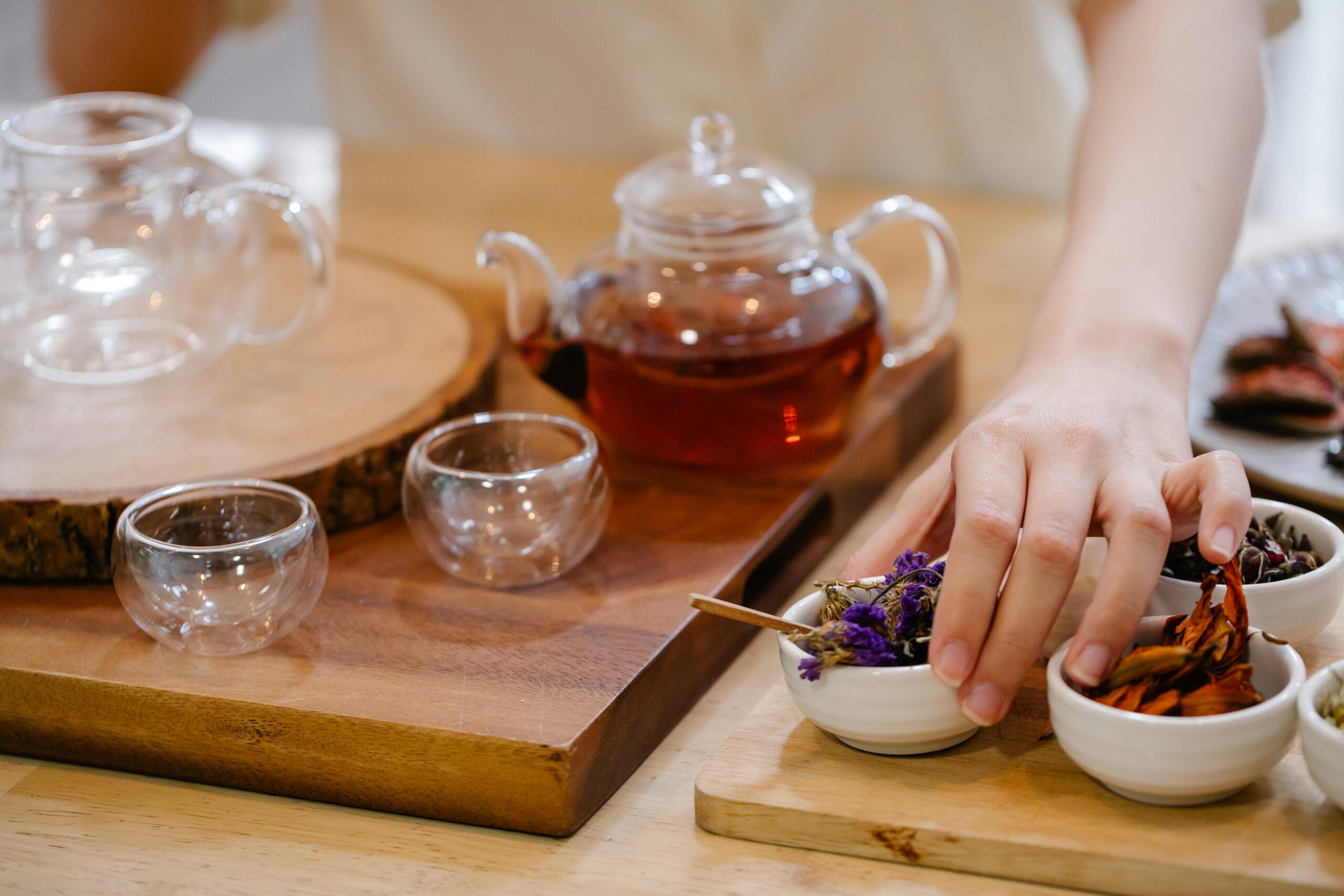Tea is more than just a drink; it’s an experience, a ritual, and for many, a journey of discovery. While a single-origin tea can offer a pure taste of its origins, blending teas allows for endless creativity and personalization. Tea blending is an ancient art, and creating your own blends can be a rewarding way to explore new flavours, aromas, and health benefits. In this post, we’ll delve into the world of tea blends and provide you with the knowledge to start crafting your own unique concoctions.
Understanding the Basics of Tea Blending
Before we dive into blending, it’s important to understand the foundation—tea itself. The five main types of tea are:
- White Tea: The least processed of all teas, white tea has a delicate, subtle flavor. It’s ideal for blends where you want the other ingredients to shine without overpowering the tea itself.
- Green Tea: With a lighter, grassy flavour, green tea is minimally oxidized, retaining its natural, fresh taste. It’s often used in blends that aim to highlight delicate flavours.
- Oolong Tea: This tea is partially oxidized and falls somewhere between black and green tea in terms of flavour. Oolong teas are complex, offering floral, fruity, or even toasty notes, making them versatile in blends.
- Black Tea: Strong, full-bodied, and often malty, black tea is fully oxidized, giving it a robust flavour. It serves as an excellent base for blends.
- Herbal Tea (Tisanes): Technically not tea, herbal teas are made from herbs, flowers, fruits, and spices. They can be blended on their own or added to true tea for unique flavour combinations.
The Building Blocks of a Tea Blend
A successful tea blend is made up of three key components:
- Base Tea: This is the foundation of your blend and typically makes up 60-80% of the blend. The base tea sets the tone, so choose one that complements the flavours you want to highlight.
- Secondary Ingredients: These include herbs, spices, flowers, fruits, and other teas. They add complexity, aroma, and additional flavours to your blend. Secondary ingredients usually make up 20-30% of the blend.
- Accents: These are the finishing touches—such as citrus peels, vanilla, or even chocolate—that enhance or balance the blend. Accents are used sparingly, often just 5-10% of the blend.
Popular Tea Blends and How to Create Them
Here are some classic tea blends and how you can recreate or modify them at home:
- Earl Grey:
- Base: Black tea
- Secondary: Bergamot oil or dried bergamot peel
- Accents: Lavender or vanilla (optional for a twist)
- How to Make: Start with a strong black tea like Assam or Ceylon. Add a few drops of natural bergamot oil or a teaspoon of dried bergamot peel per cup of tea. If you want to add a floral or creamy note, consider a pinch of lavender or a hint of vanilla.
- Earl Grey is my go to brew!
- Chai:
- Base: Black tea (Assam is traditional)
- Secondary: Cinnamon, cardamom, cloves, ginger, black pepper
- Accents: Star anise or nutmeg (optional)
- How to Make: Combine black tea with a mix of warming spices. The ratio can be adjusted to taste, but a common starting point is 1 teaspoon of black tea to ½ teaspoon of each spice. Adjust for spiciness by adding more or less ginger and pepper.
- Jasmine Green Tea:
- Base: Green tea
- Secondary: Dried jasmine flowers
- How to Make: This is a simple yet fragrant blend. Use a light green tea like Chinese green tea and mix it with dried jasmine flowers. The floral note should be subtle, so start with a ratio of 3 parts tea to 1 part jasmine flowers.
- Jasmine is one of my all-time favourite teas.
- Minty Fresh:
- Base: Green tea or white tea
- Secondary: Dried peppermint or spearmint leaves
- Accents: Lemon peel or lemongrass (optional)
- How to Make: Mix your chosen base tea with dried mint leaves. A good starting ratio is 2 parts tea to 1 part mint. For a citrusy twist, add a small amount of lemon peel or lemongrass.
- Spiced Rooibos:
- Base: Rooibos (herbal tea)
- Secondary: Cinnamon, orange peel, cloves
- Accents: Vanilla or almond extract (optional)
- How to Make: Rooibos is naturally sweet and pairs well with warm spices. Combine rooibos with your chosen spices, using a 3:1 ratio of tea to spices. A few drops of vanilla or almond extract can add depth to the flavour.
Tips for Creating Your Own Blends
- Start Small: When experimenting, start with small batches to avoid wasting ingredients. Use a teaspoon of each component and adjust as needed.
- Balance Is Key: Make sure your flavours complement each other rather than compete. A blend should be harmonious, with no single ingredient overpowering the others.
- Test and Taste: After blending, brew a small amount to test the flavour. Note any adjustments you might need—more base tea for strength, additional accents for more complexity, etc.
- Keep Notes: Document your blending experiments, including ratios and steeping times. This will help you refine your recipes over time.
- Let It Rest: Some blends benefit from resting for a few days after mixing, allowing the flavours to meld together.
Conclusion
Tea blending is an art that invites exploration and creativity. Whether you’re recreating classic blends or crafting something entirely new. With practice and experimentation, you can develop your own signature blends that suit your taste and mood. So, gather your teas, spices, and herbs, and start blending your way to the perfect cup!


